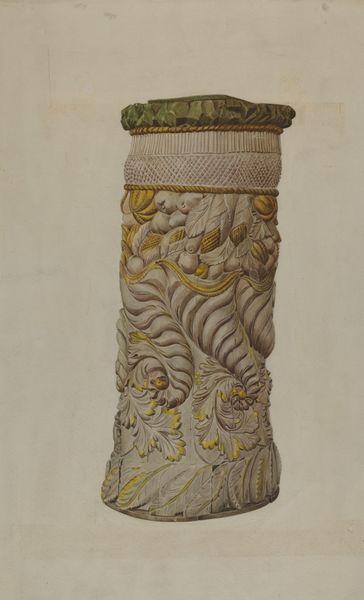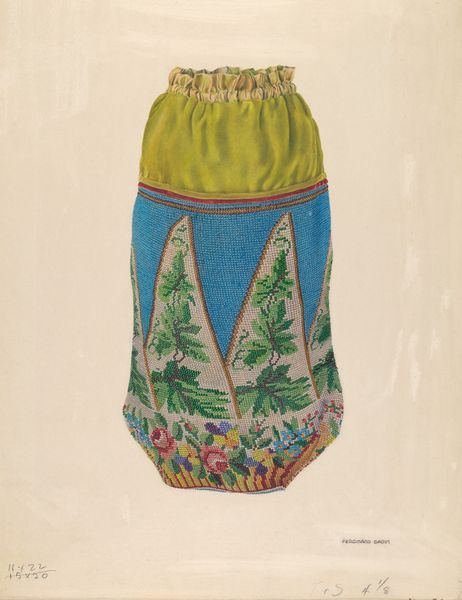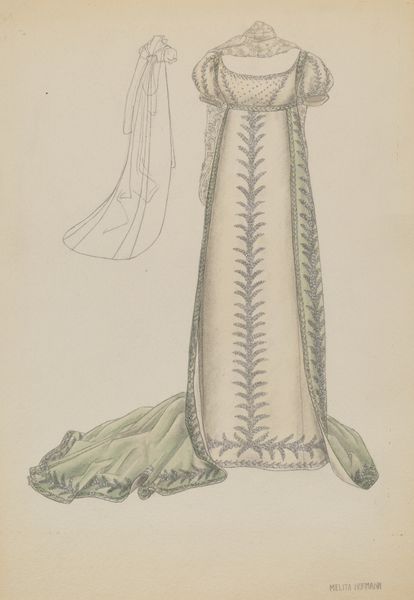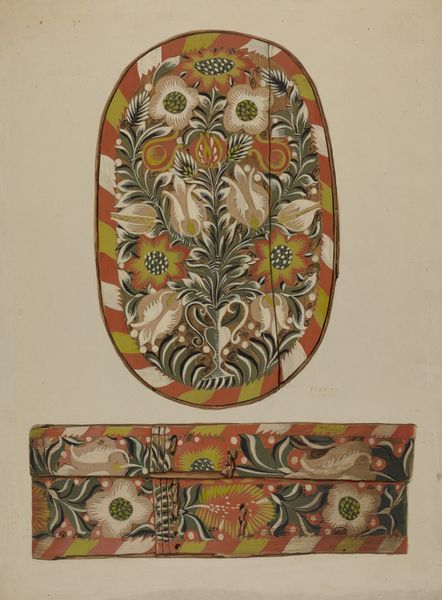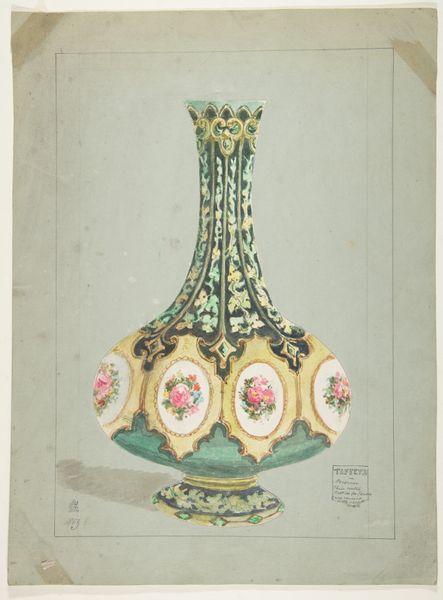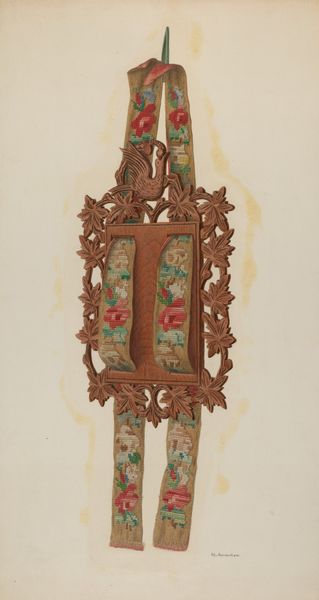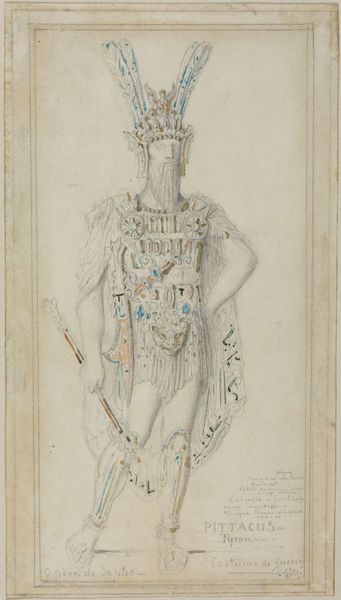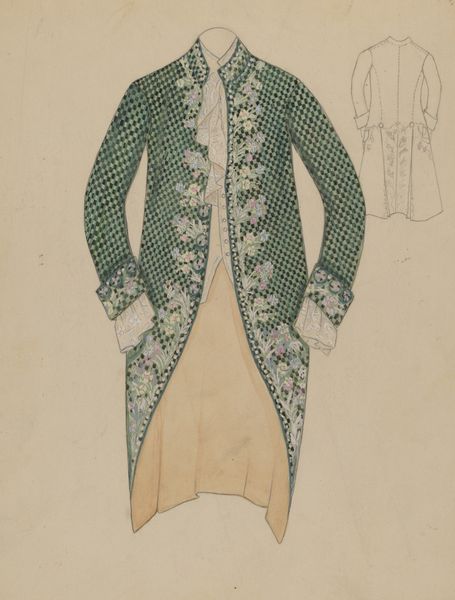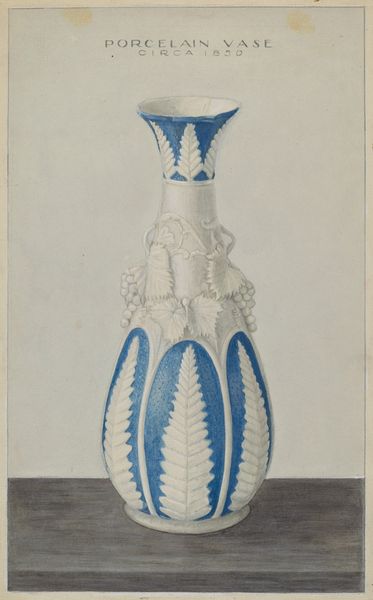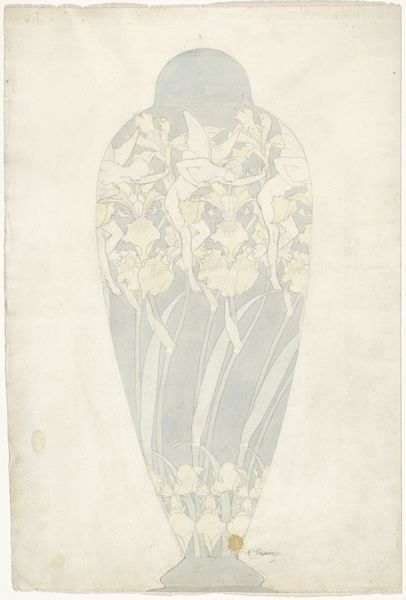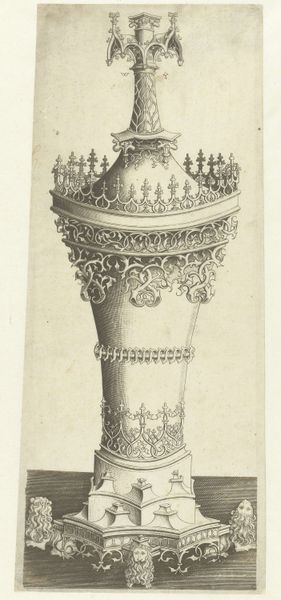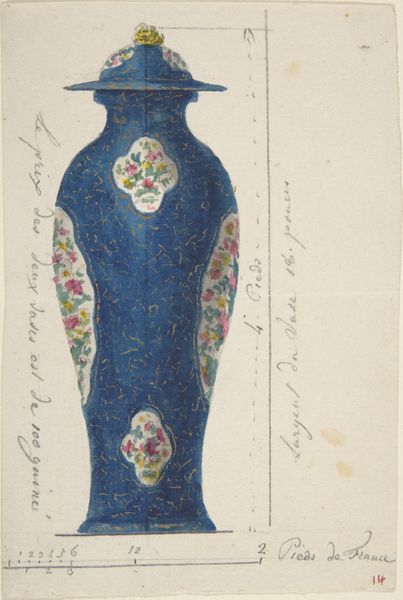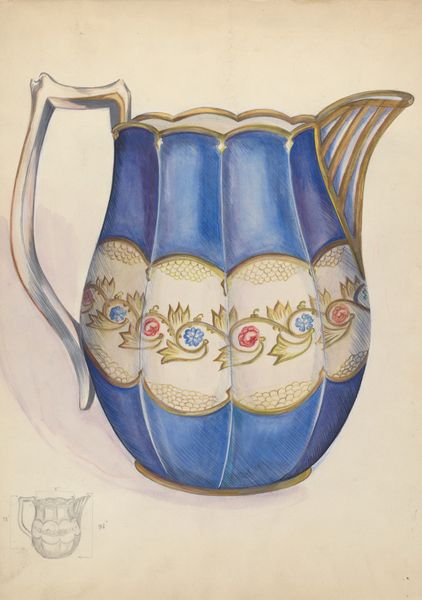
drawing, coloured-pencil, watercolor
#
drawing
#
coloured-pencil
#
watercolor
#
coloured pencil
#
watercolour illustration
Dimensions: overall: 35.7 x 24.7 cm (14 1/16 x 9 3/4 in.) Original IAD Object: 7.9" High 8 1/4" Dia at spout (including handle)
Copyright: National Gallery of Art: CC0 1.0
Editor: This is a watercolor and colored pencil drawing called "Pitcher," created around 1936. It looks like a design for a very fancy, perhaps antique, water pitcher. The classical figures on either side almost seem like they’re trapped within these blue archways. What stands out to you in this piece? Curator: The immediate impression is of something historical being filtered through a modern sensibility. Look at the choice of rendering the design for a functional object – a pitcher. How might the historical context, particularly the economic pressures of the 1930s, influence an artist to focus on reimagining utilitarian objects with such decorative complexity? Editor: That’s interesting – it could be seen as aspirational during a difficult period. But who would have seen this drawing? Curator: That’s the crucial question. Was this intended for mass production, a one-off commission, or simply an exercise in artistic design? Understanding its intended audience shapes our understanding of its cultural function. Were these designs to reinforce social hierarchies, or introduce an aesthetic into more modest homes? Editor: So the intention behind it would have shaped the political purpose of the art, right? Curator: Precisely. Consider also how the “front view” inscription dictates our perspective. How does knowing this is merely a single facet alter our engagement with it as an object of design? Is it selling function, aspiration, or perhaps something else entirely? Editor: I hadn’t considered how much the 'front view' designation affects how we see it. It almost feels incomplete. Curator: Exactly. By thinking about the design's potential for production, the intended audience, and the single perspective offered, we reveal its possible socio-cultural narratives. Editor: This has given me a completely new angle to approach design with, and it makes me realize there is a whole other world that is influencing the final work. Curator: And that broader historical context, is after all, part of what informs it, both yesterday and today.
Comments
No comments
Be the first to comment and join the conversation on the ultimate creative platform.
